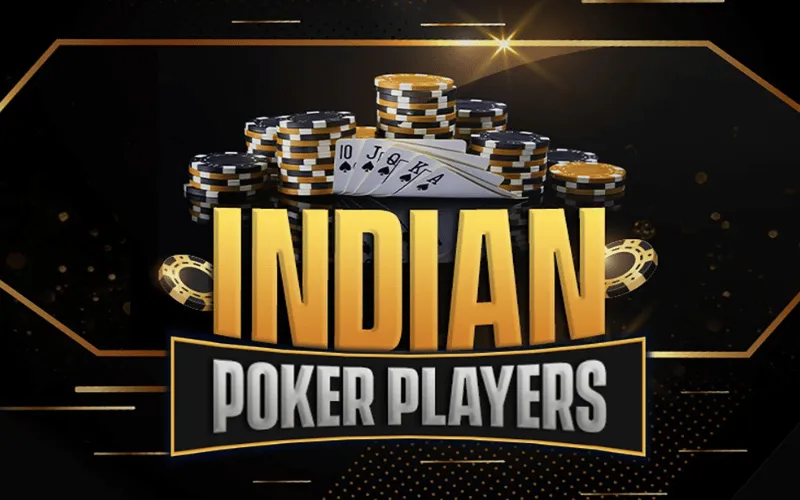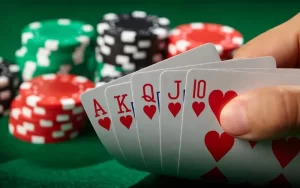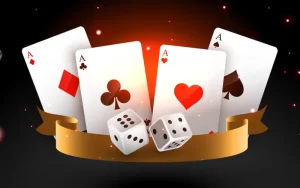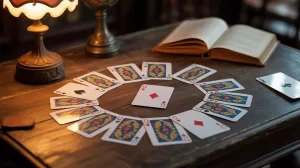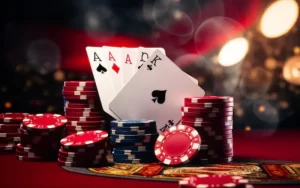Indian Poker, also known as Blind Man’s Bluff, is a unique and entertaining variation of traditional poker that flips the game quite literally on its head. Instead of keeping your cards secret, Indian Poker requires players to display their cards on their foreheads, facing outward, so that everyone can see your card except you. This adds a layer of psychological gameplay and bluffing that makes it both hilarious and strategic.
Origins and Cultural Background
Despite its name, Indian Poker does not have roots in India. The name most likely originates from the stereotypical image of a feathered headband often associated with Native Americans, referring to the way players hold cards against their foreheads. The game is more popular in Western countries and is often played as a party game due to its simplicity and social nature. It’s known for causing laughter, tension, and dramatic bluffing showdowns.
Basic Rules and Gameplay
The standard version of Indian Poker is simple and can be played with a regular 52-card deck. Here’s how it works:
- Setup: Each player is dealt one card face down. Without looking at it, they place the card on their forehead so everyone else can see it.
- Betting Round: Players take turns betting based on the strength of the other players’ visible cards—except their own. The idea is to guess the strength of your own card by seeing everyone else’s.
- Bluffing Element: Bluffing becomes central. A player with a weak card may bet aggressively to scare others into folding, while a player with a strong card might play coy.
- Reveal: After the betting concludes, players can choose to call, fold, or raise. The remaining players reveal their cards and the highest card wins the pot.
- Tiebreaker: In case of a tie, the suit can be used to determine the winner (typically ranked Spades > Hearts > Diamonds > Clubs).
This version of the game works best with 3 to 6 players. More than that, and the game can become chaotic or lose the psychological sharpness that makes it so fun.
Strategic Considerations
While Indian Poker Game may seem purely comedic at first, it involves significant strategy:
- Reading Others: Since you can’t see your card, your decisions rely on how others are betting. If everyone is cautious, your card might be high. If others bet aggressively, they might know you have a weak card.
- Bluffing: Players often bluff to manipulate others. Knowing when to call a bluff or when to make one yourself is key.
- Memory and Observation: Observing patterns in others’ behavior and remembering their tendencies from past rounds can provide a major edge.
Variations of Indian Poker
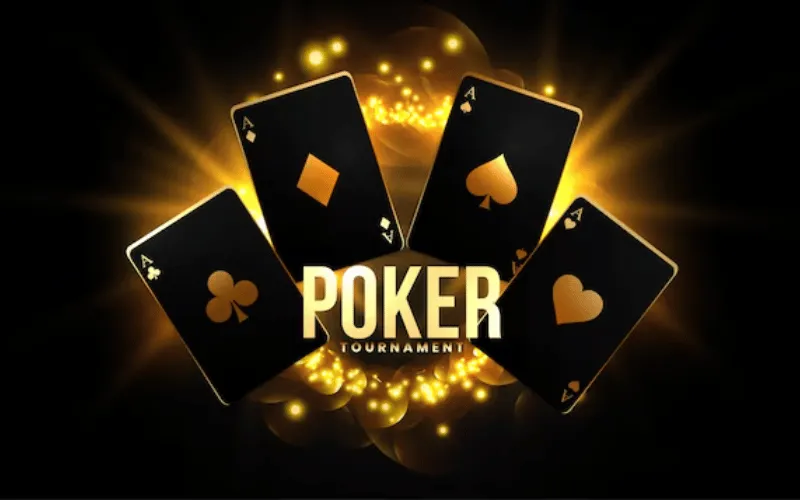
There are several popular twists on the basic Indian Poker format:
- Two-Card Indian Poker: Players hold two cards instead of one, and the hand rankings follow traditional poker rules (pair, straight, flush, etc.). This adds complexity and depth.
- Drinking Game Variant: Often played at parties, the loser of each round takes a drink. This version emphasizes fun over strategy.
- Tournament Style: Players start with a fixed number of chips, and the game continues until one player has all the chips. This version adds long-term strategy and raises the stakes.
- Silent Indian Poker: No talking or gestures allowed—only betting. This makes the game more challenging and intense.
Social and Entertainment Value
Indian Poker thrives on social interaction and humor. Watching someone confidently bet big on a low card stuck to their forehead is endlessly entertaining. It’s a fantastic icebreaker at parties and casual gatherings. Unlike more complex poker games, Indian Poker is easy to learn, fast-paced, and inclusive, requiring no deep understanding of traditional poker strategy to enjoy.
Because everyone sees everyone else’s cards except their own, it levels the playing field and shifts the focus from card math to psychology and social bluffing. This makes it especially appealing to casual players and those new to card games.
Indian Poker in Popular Culture
Indian Poker has appeared in several films, TV shows, and even video games, usually portrayed as a humorous or chaotic activity. It’s often associated with fun-loving characters or drunken party scenes, reinforcing its reputation as a light-hearted, sociable game.
Final Thoughts
Indian Poker may not be the most serious poker variant, but it’s certainly one of the most engaging and memorable. Its blend of bluffing, humor, and interaction makes it a hit among both seasoned poker fans and complete novices. Whether you’re looking for a quick party game, a new twist on poker night, or just a fun way to test your bluffing skills, Indian Poker is always a great choice.

